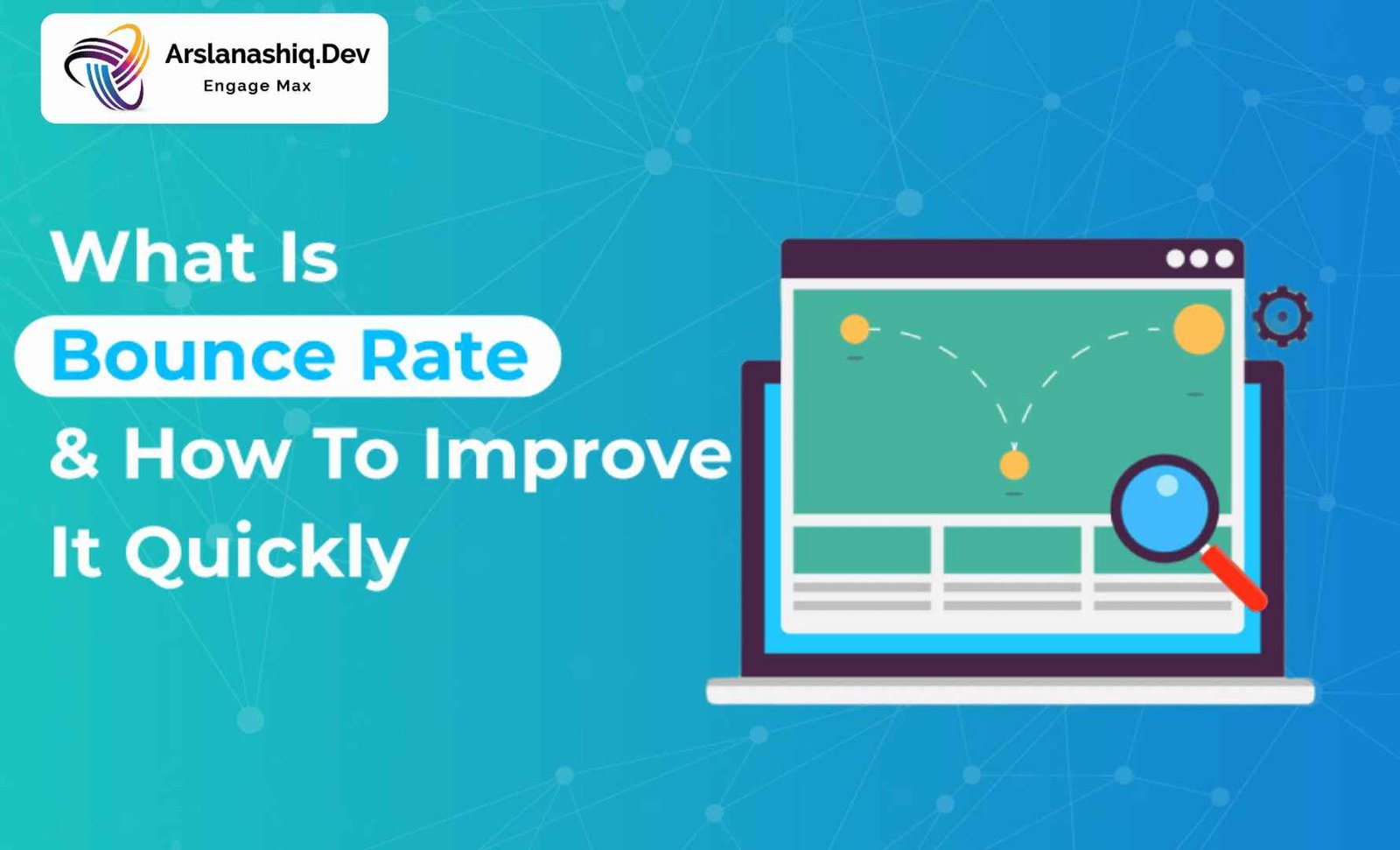
As a digital marketer or SEO leader, you’re probably always looking for new ways to improve your website’s search engine rankings. But what you may not realize is that one key metric—your bounce rate—may be holding you back.
In this post, we’ll look at exactly what bounce rate is, how it’s calculated, and some quick and easy ways to improve it. By the end, you’ll have a better understanding of this important metric and how to use it to your advantage.
Table of Contents
What is bounce rate?
Bounce rate is the percentage of website visitors who leave after viewing just one page. This metric is important because it shows you how engaging your website is for users.
A high bounce rate (40% or more) indicates that something is wrong with your site, whether it’s poor design, slow loading, or uninteresting content. A low bounce rate (less than 30%), on the other hand, indicates that visitors to your site are finding what they are looking for and staying on your site. A lower bounce rate will hurt your SEO ranking because Google looks at engagement metrics when determining where to place a website on its search engine results pages (SERPs).
How does Google calculate bounce rate?
In simpler terms; Bounce rate is calculated as the number of single page visits (ie people who left your site after viewing only one page) divided by the total number of visits. So if you had 100 visits to your website and 60 of them were one-pagers, your bounce rate would be 60%.
While the exact algorithm Google uses to calculate bounce rates is unknown, there are a few clues we can use to reverse engineer the process. Based on our findings, it appears that Google considers several factors when determining bounce rates. These include:
1. Number of interactions
If a visitor interacts with your site (for example by filling out a form or clicking a link), it means that they are interested in what you have to say. This signals to Google that your website is relevant and engaging, which will help improve your rankings. Conversely, if a visitor isn’t interacting with your site, it may mean they didn’t find the content interesting or relevant. This tells Google that you may need to make some changes to improve your ranking.
2. Amount of time spent on the site
If a visitor spends a lot of time on your site, it is a sign that they are engaged with the content. This signals to Google that your website is relevant and engaging, which will help you improve your rankings. Conversely, if a visitor doesn’t spend a lot of time on your site, it could mean they didn’t find the content interesting or relevant. This tells Google that you may need to make some changes to improve your rankings.
On the other hand, if a visitor only spends a few seconds on a page before clicking back to the search results, it means they didn’t find what they were looking for. This tells Google that the page may not be as relevant as other pages in the search results.
3. Number of pages visited
If a visitor visits many pages on your website, it means they are interested in what you have to say. This signals to Google that your website is relevant and engaging, which will help you improve your rankings. Conversely, if a visitor only visits one or two pages on your site, it may mean that they did not find the content interesting or relevant. This tells Google that you might need it
What is a good bounce rate?
This is a difficult question to answer because it depends on the type of website you have. Generally speaking, a high bounce rate is just over 70%. However, if you have a content-rich website with long articles, a bounce rate of 70% or more may not be a cause for concern. On the other hand, if you have a product-focused website with short pages, a bounce rate of 70%+ may indicate a problem.
Your home page is often the first point of contact between you and your potential customers. Therefore, it is important to ensure that it is optimized for both search engines and visitors. This means using the right keywords, having an engaging headline and providing a clear call to action.
However, even if you have the perfect homepage, you are still not guaranteed success. One of the most important factors in determining the success of your website is bounce rate.
Bounce rate is the percentage of visitors who leave your website after viewing just one page. A high bounce rate often indicates a problem with your website. It could mean that your content is not engaging, your design is off-putting, or your keywords.
What causes high bounce rates?
Several factors can contribute to your website’s high bounce rate. Some common causes include:
Irrelevant or uninteresting content
If your site’s content isn’t relevant to what users are looking for, they’re likely to leave quickly without taking the time to delve deeper into your site. To ensure this doesn’t happen to your business, do your keyword research and create content that accurately reflects the searcher’s intent.
Bad user experience
If users can’t navigate your site easily, or if they can’t find the information they’re looking for, they’re more likely to return.
Improving your website design and user experience will help ensure this doesn’t happen. Make it easy to navigate and use so users can quickly get what they need and want – that’s what keeps people engaged and coming back.
Slow loading
If your website takes too long to load, users are likely to give up and go elsewhere. In fact, research shows that nearly half of users will abandon a website if it takes more than 3 seconds to load! That’s why it’s so important to make sure your website is as fast as possible. There’s not much you can do about the speed of external links to your site, but there are a few things you can do to make sure your site is as fast as possible.
Confusing call to action
If your call to action is unclear or confusing, visitors may not know what you want them to do next. This could result in high abandonment rates as people are unsure whether to buy something, sign up to the mailing list, read more about the product, etc. To avoid this, make sure the -action is clear and easy to understand , so everyone knows what to do when they get to your page.
Not suitable for mobiles
If your website is not mobile friendly, you are probably missing out on many potential customers who are looking for your product or service on their smartphones. Google has gone so far as to state that having a responsive website is now a ranking factor. This means that if your site doesn’t perform well on mobile, you risk dropping out of the SERPs when people search for things related to what you do. Make sure your website is responsive and mobile friendly to avoid this problem.
How to improve bounce rate?
Now that we know what bounce rate is and some common causes of high bounce rates, let’s look at some simple ways to improve this metric.
1. Create RELEVANT AND USABLE content
As we mentioned before, one of the main reasons for high bounce rates is irrelevant or uninteresting content. Make sure your website copy is clear, concise and interesting. Work on your headline and subheadings to make sure they grab attention and encourage people to keep reading. To engage users, make sure your content matches their needs and interests. Use keyword research to determine what topics users are searching for and create content that accurately reflects their intent. Additionally, make sure your content is engaging with strong headlines, interesting facts, and eye-catching visuals.
2. Improve the user experience of your website
Another cause of high bounce rates is poor user experience. If your site is difficult to navigate, looks unprofessional or untrustworthy, visitors will bounce. If you want users to stay on your site longer, make sure it’s easy to navigate and use. Use clear and concise headings and subheadings so that users can easily find what they are looking for. Additionally, use visuals such as images and videos to break up the text and add interest. When working with a designer, pay attention to things like font size and color, spacing, and overall layout—these small details play a big role in creating a cohesive brand identity. And finally, make sure your pages load quickly with a fast web host and image compression.
3. Promote your content through social media and other channels
The more people who see your content, the more likely someone will stick around to read it. So be sure to promote your blog posts and articles through social media, email newsletters, paid social media ads, editorial partnerships, and other channels.
Wrap Up
Improving your bounce rate can be a quick and easy way to improve your website’s overall performance. By addressing the above issues, you can quickly make your website more user-friendly and engaging, leading to better results
Contact arslanashiq.dev today for a free consultation on how we can help you improve your website’s performance. We specialize in SEO services, social media marketing, and web design/development and would be happy to help you take your site to the next level.


Add a Comment